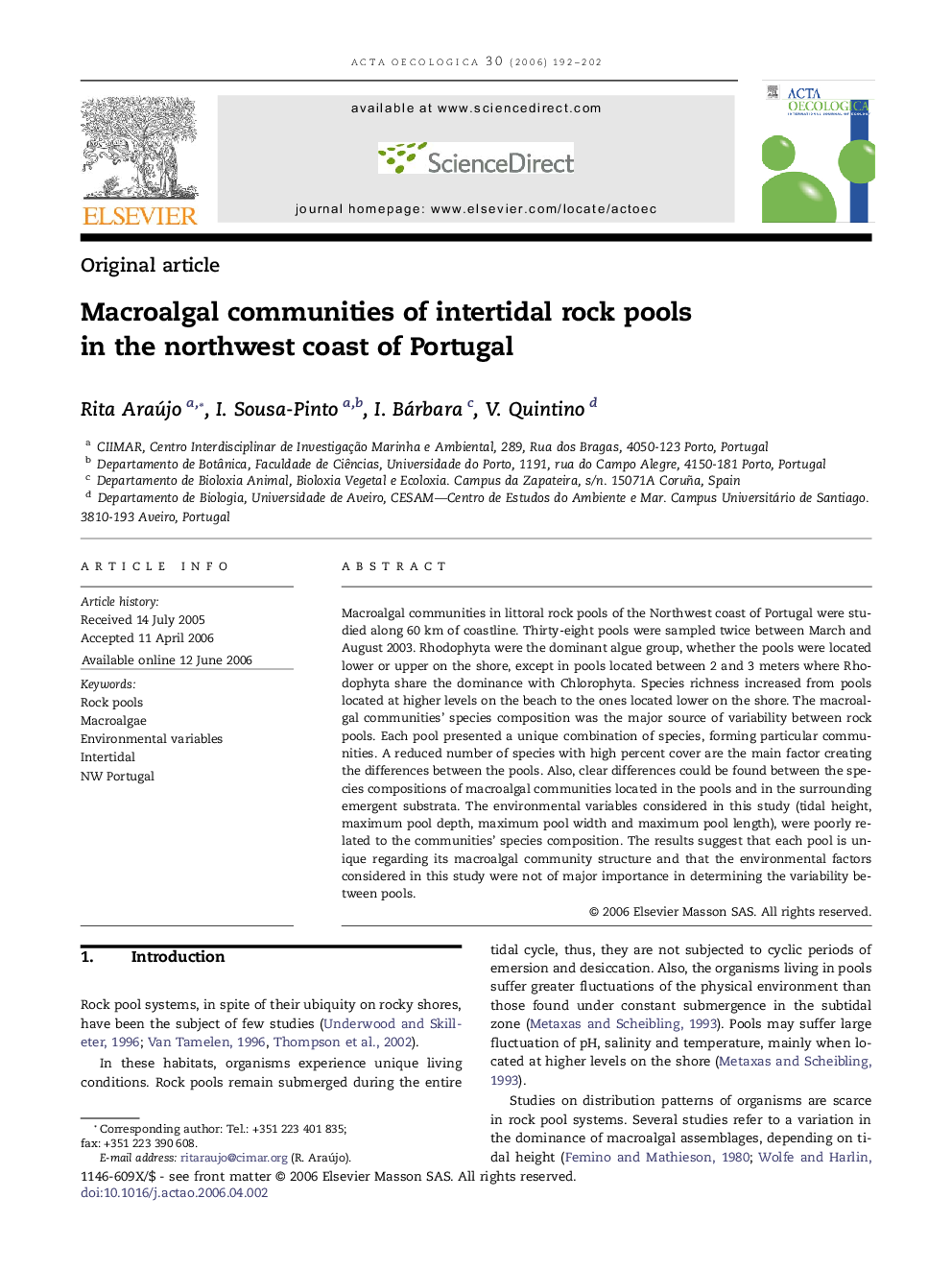| Article ID | Journal | Published Year | Pages | File Type |
|---|---|---|---|---|
| 4381637 | Acta Oecologica | 2006 | 11 Pages |
Abstract
Macroalgal communities in littoral rock pools of the Northwest coast of Portugal were studied along 60 km of coastline. Thirty-eight pools were sampled twice between March and August 2003. Rhodophyta were the dominant algue group, whether the pools were located lower or upper on the shore, except in pools located between 2 and 3 meters where Rhodophyta share the dominance with Chlorophyta. Species richness increased from pools located at higher levels on the beach to the ones located lower on the shore. The macroalgal communities' species composition was the major source of variability between rock pools. Each pool presented a unique combination of species, forming particular communities. A reduced number of species with high percent cover are the main factor creating the differences between the pools. Also, clear differences could be found between the species compositions of macroalgal communities located in the pools and in the surrounding emergent substrata. The environmental variables considered in this study (tidal height, maximum pool depth, maximum pool width and maximum pool length), were poorly related to the communities' species composition. The results suggest that each pool is unique regarding its macroalgal community structure and that the environmental factors considered in this study were not of major importance in determining the variability between pools.
Related Topics
Life Sciences
Agricultural and Biological Sciences
Ecology, Evolution, Behavior and Systematics
Authors
Rita Araújo, I. Sousa-Pinto, I. Bárbara, V. Quintino,
